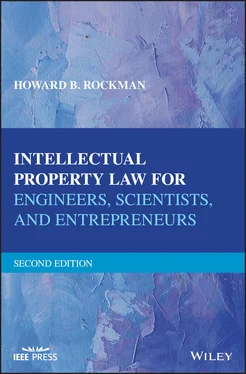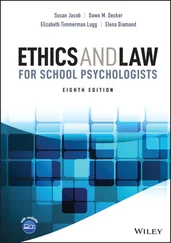A primary reason for passing a statute is general dissatisfaction among the public with a present law situation in a particular field. The passage of a statute voids the common law covering the same point when the legislature’s jurisdiction is invoked. However, there are limitations on the statutes passed by the legislature. For example, a statute cannot conflict with the U.S. Constitution or with the state Constitution involved. If a case arises involving a statutory issue, the courts may find that the statute conflicts with the Constitution, and the statute may be held invalid. Thus, the Constitutions are the supreme laws of their respective jurisdictions.
Legislatures also pass laws to develop a comprehensive set of rules to deal with specific problems and situations. Under the common law system, on a case‐by‐case basis, many years and several complex decisions may evolve before the law in a certain area changes. A legislature has the ability to cut through that time and enact legislation immediately to establish new laws.
The U.S. common law was brought over from England by the colonists, and remains the basis of the legal system today in all but one state (Louisiana) of the United States. The common law is used by a court to decide issues between parties when no statute or constitutional law covers the particular legal problem involved. The common law arose with the practice of judges writing their opinions, giving the general principles and reasoning they followed in deciding cases. When the facts were similar in later cases, judges tended to follow the earlier opinions of other judges. These decisions eventually were followed by the courts throughout a particular jurisdiction in cases with similar or near‐similar facts. This gave rise to the term “common law” to describe these judge‐made decisions.
A primary principle of American law involves abiding by previous decisions—a doctrine known in Latin as stare decisis . This is the embodiment of the main feature of the common law wherein the law itself is built on prior case decisions. Thus, a judge uses earlier cases with similar facts as the foundation for that judge’s decision in a particular case. Case law today is reported, and readily available to lawyers, parties, and the judges for precedent purposes. This body of precedential law in the United States forms the body of common law used by both the state and federal governments, except for the state of Louisiana, which still uses the French Civil Code system.
The common law is defined in Kent’s Commentaries (an early legal treatise) as “those principles, usages, and rules of action applicable to the government and security of persons and property which do not rest for their authority upon any express or positive declaration of the will of the Legislature.” This sets forth the principle that the common law is extracted from recorded decisions of courts. As new factual situations arise before the courts, new interpretations of law are made by the courts, and the common law is continuously amplified and modernized.
Courts will often make use of a relevant established and widely used business custom. For example, silence on the part of one to whom an offer is made usually cannot constitute acceptance of that offer. However, if there has been a history of dealings between persons, or if there is a practice in a particular business or trade, such that silence constitutes acceptance, the court will consider this and decide accordingly. Also, terminology particular to a trade is given its common trade usage in interpretation in a court of law. Business customs also involve something called the “law merchant.” Merchants often need certainty about the rules that would be applied to any dispute by courts in various locations. Thus, a body of law that developed beginning in the Middle Ages continues until today out of business customs, and this set of laws is used by various courts in deciding commercial cases between merchants.
Two great systems of law are used in Western civilization.
1 The common law is used in most English‐speaking countries.
2 The code or civil law is used in the remainder of Western societies.
The code or civil law, also known as the “continental system,” originated around 450 BC as the Law of the Twelve Tables in the Roman Empire. This system expanded and contracted during the next ten centuries, and statutes were passed during that time and meanings clarified in court decisions. This civil law spread to other countries and became the foundation of the legal systems used in continental Europe today, and in other “civil law” countries.
Civil or code law is predicated on the establishment of comprehensive and complete written codes or statutes, the court’s task being to apply the correct statute to the particular set of facts in each case.
Common law is built on the use of prior court decisions determining the outcome of subsequent cases presenting similar factual situations. Most of the law brought to the United States by its earlier settlers was the English common law. However, in certain areas of the United States settled by the French and Spanish, remains of civil law systems may be found, such as in Louisiana, Texas, and California.
The term “civil law” has two meanings. First, it means the code of law based on the Roman codes, and second, it is the system of private law as distinguished from criminal law, the latter regulating the conduct of individuals vis‐a‐vis the state.
The enforcement of laws takes one of three forms:
1 Punishment such as fines or imprisonment, usually for a crime, but also used in civil contempt situations, such as disobeying a court order.
2 Relief in actions involving private rights. This amounts to monetary damages awarded to the person who has been harmed, or a court order such as an injunction preventing future harm.
3 Social censure, which is the fear of public opinion, and, although not a recognized legal means of enforcement, its existence, strength, and importance as a deterrent to bad behavior cannot be overlooked.
Most of the people in a civil society comply with most of the laws unconsciously. The laws have been a part of our lives since early childhood.
It is common knowledge that the law is slow to change. However, the law does change to reflect changes in society and changes in technology. For example, several years ago, the patent laws did not cover software algorithms. Today, the law has been changed by the courts, and software and algorithms, to an extent, can be patented. Thus, the laws can be changed in one of two ways: either by the decisions of courts being overruled by higher courts, or by the enactment of statutes by the legislatures. In addition, certain government agencies have the authority to make changes by executing rules and orders, such as interest rate changes by the Federal Reserve System.
The courts do have the ability to overrule or not follow prior decisions; however, in the interest of retaining stability, consistency, and predictability in the law, courts are quite reluctant to overrule or not follow prior decisions. However, at the same time, courts recognize that nothing is as permanent in this world as change itself, and, based on slightly different facts, a court may or may not follow an earlier decision, or may completely overrule an earlier decision as being outdated. For example, in 1904, the U.S. Supreme Court decided that separate but equal schools divided on racial lines was not a violation of the Constitution. In 1954, however, the Warren Court, based on additional evidence showing actual unfairness of such separate but equal schools, reversed the earlier court and decided that separate but equal schools along racial lines was a violation of the Constitutional right of equal protection of the law.
Читать дальше












